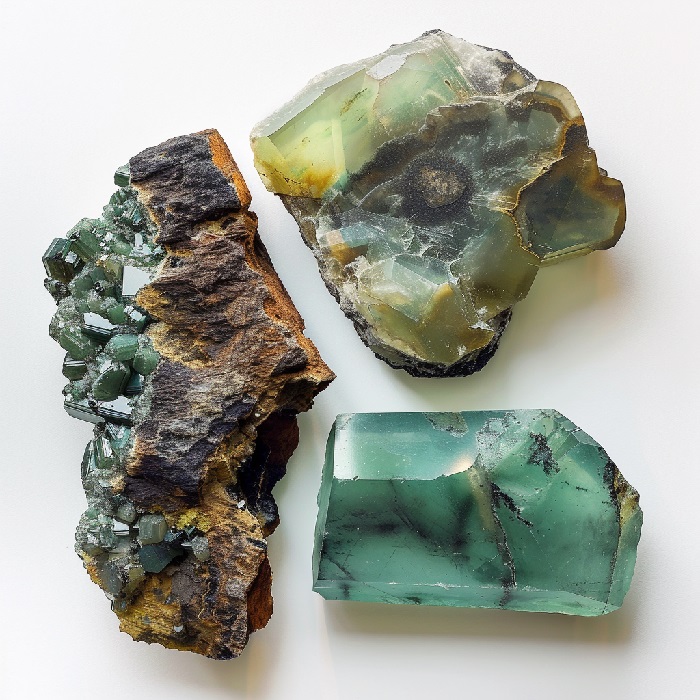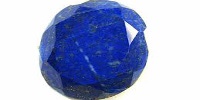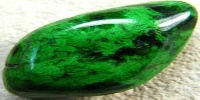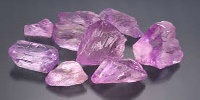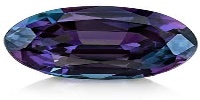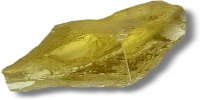Beryl Mining
DESCRIPTION:
Beryl, popularly known in Greek as "crystal," is another precious gem that comes in different colors and varieties. However, this gemstone is not only colorless but can also be found in a wide range of colored stones when mixed with other impurities, such as blue, green, pink, and red. Among these varieties, emerald and aquamarine hold a special place. Aquamarine is pure blue in color, while emerald, considered the most sought-after gemstone, appears green. Interestingly, despite the presence of impurities, these gems retain their value, and colored varieties are highly prized by buyers.
High-quality resistant wire used in many electrical devices is often a mixture of copper and beryl. It is believed that beryl can cure eye, heart, and spine problems, and protect against evil spirits, providing a sense of security. Wearing jewelry adorned with this gem is said to dispel lethargy and promote youthfulness and energy throughout life.
Another significant member of the beryl family is Golden Beryl. Its golden color comes from iron impurities, enhancing its existing features and giving it a golden hue. Despite its ordinary appearance, apart from exceptional hardness, the addition of these impurities makes it highly valuable. Beaded jewelry, necklaces, and earrings often feature this gem, adding elegance and substance to the fashion world. It is sometimes used as a substitute for imperial topaz, one of the most expensive gems in the family of precious stones.
Beryl, being a precious gem, is believed in the fashion world to be suitable for any type of jewelry due to its hardness and durability. Compared to other gemstones, it is also relatively affordable and can be crafted into various sizes, whether small, large, or medium.
Despite its hardness and durability, beryl requires careful maintenance. Cleaning it with soap and water using a soft cloth is recommended, ensuring thorough rinsing of any soapy residue. It should not be stored with other gemstones to prevent scratches. Avoid wearing beryl jewelry while working in the kitchen, as chemicals like bleach and acids can damage it. The availability of colored stones at various price points makes beryl a staple in the jewelry market, and it is even used for making spectacles.
MINING:
Beryllium is a rare element throughout the universe, gradually depleted within stars' cores as it undergoes fusion into heavier elements. In its natural state, beryllium exists only in combination with other elements within minerals.
This versatile element finds application in metallurgy, where it serves as a hardening agent. Its unique properties make it invaluable in various outer space and nuclear applications. Beryllium stands out as the sole stable light metal with a notably high melting point.
In practical use, beryllium is alloyed with copper or nickel to produce gyroscopes, springs, electrical contacts, spot-welding electrodes, and non-sparking tools. These alloys enhance the electrical and thermal conductivity of the base metals, showcasing beryllium's adaptability in diverse industrial settings.
GLOBAL BERYL PRODUCTION:
| Country | Production(in metric tonnes) |
|---|---|
| United States | 4370 |
| China | 1750 |
| Mozambique | 330 |
| Uganda | 190 |
| Brazil | 80 |
| Nigeria | 35 |
| Rwanda | 20 |
| Madagascar | 16 |
PHYSICAL PROPERTIES:
Name : Beryl
Varieties : Aquamarine, Blue Beryl,Emerald, Goshenite,Heliodor,Morganite,Red Beryl, Riesling Beryl, Vorobyevite.
Stone Sizes : To very large, red beryl rare over one carat.
Heat Sensitivity : May fracture if liquid filled inclusions present. Some green will change color, orange and pink will fade.
Formula : Be3Al2Si6O18+ Fe, Mn, Cr, V, Cs
Etymology : From the Greekberyllos.
Occurrence : Beryl occurs worldwide in granite rocks, especially granite pegmatites; also in schists (emerald), metamorphic limestones (emerald) and hydrothermal veins. The occurrence of red beryl in rhyolitic volcanic rocks in Utah is unique.
Color : Colorless, white, light green, olive green, blue-green to blue (aquamarine), deep green (emerald), pink or peachy pink (morganite), greenish yellow, yellow (heliodor), pinkish orange, red (red beryl/bixbite).
Fracture : Conchoidal to uneven
Hardness : 7.5-8
Cleavage : Indistinct
Wearability : Good
Crystallography : Hexagonal. Crystals prismatic, elongated or flattened, equant; often striated or etched; rolled pebbles; massive.
Refractive Index : 1.566-1.602
Dispersion : 0.014 (low)
Pleochroism : Weak to distinct, from colorless, yellowish green, light blue, yellowish red to sea-green, blue, purplish red.
Birefringence : Varies by variety, from 0.004 to 0.010
Luminescence : Most beryl is inert under both LW (long-wave) and SW (short-wave) UV light. Goshenite shows inert to weak pink or yellow fluorescence under LW and SW UV light. Morganite exhibits inert to weak pink or purple fluorescence under both LW and SW UV light. For emerald, refer to the "Spectral Properties" section under "Identifying Characteristics" in the emerald entry.
Luster : Vitreous
Transparency : Transparent to opaque
Specific Gravity : Goshenite: 2.6-2.9; Morganite: 2.71-2.90; Aquamarine: 2.66-2.80; Emerald: 2.68-2.78; Red Beryl: 2.66-2.70
